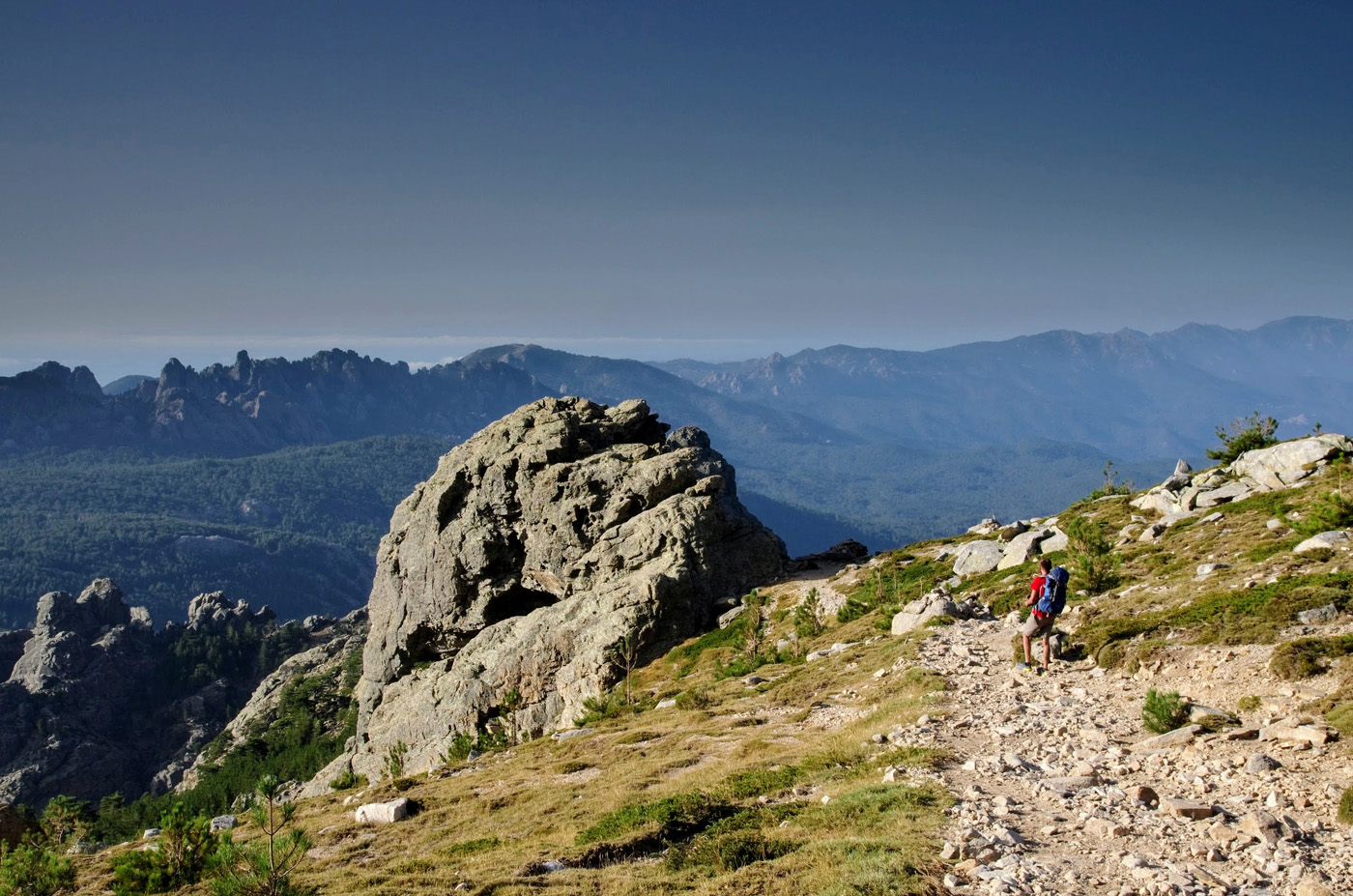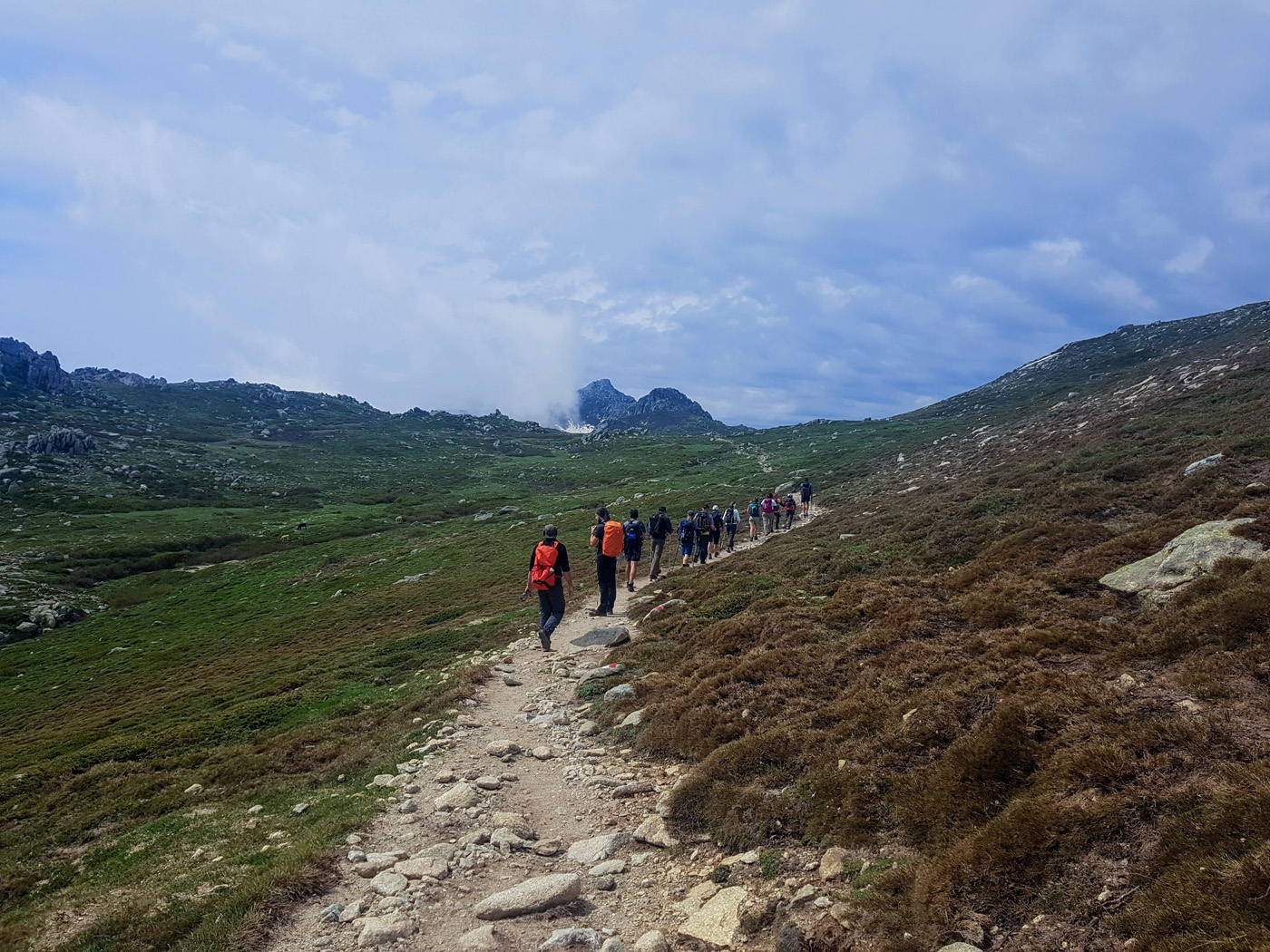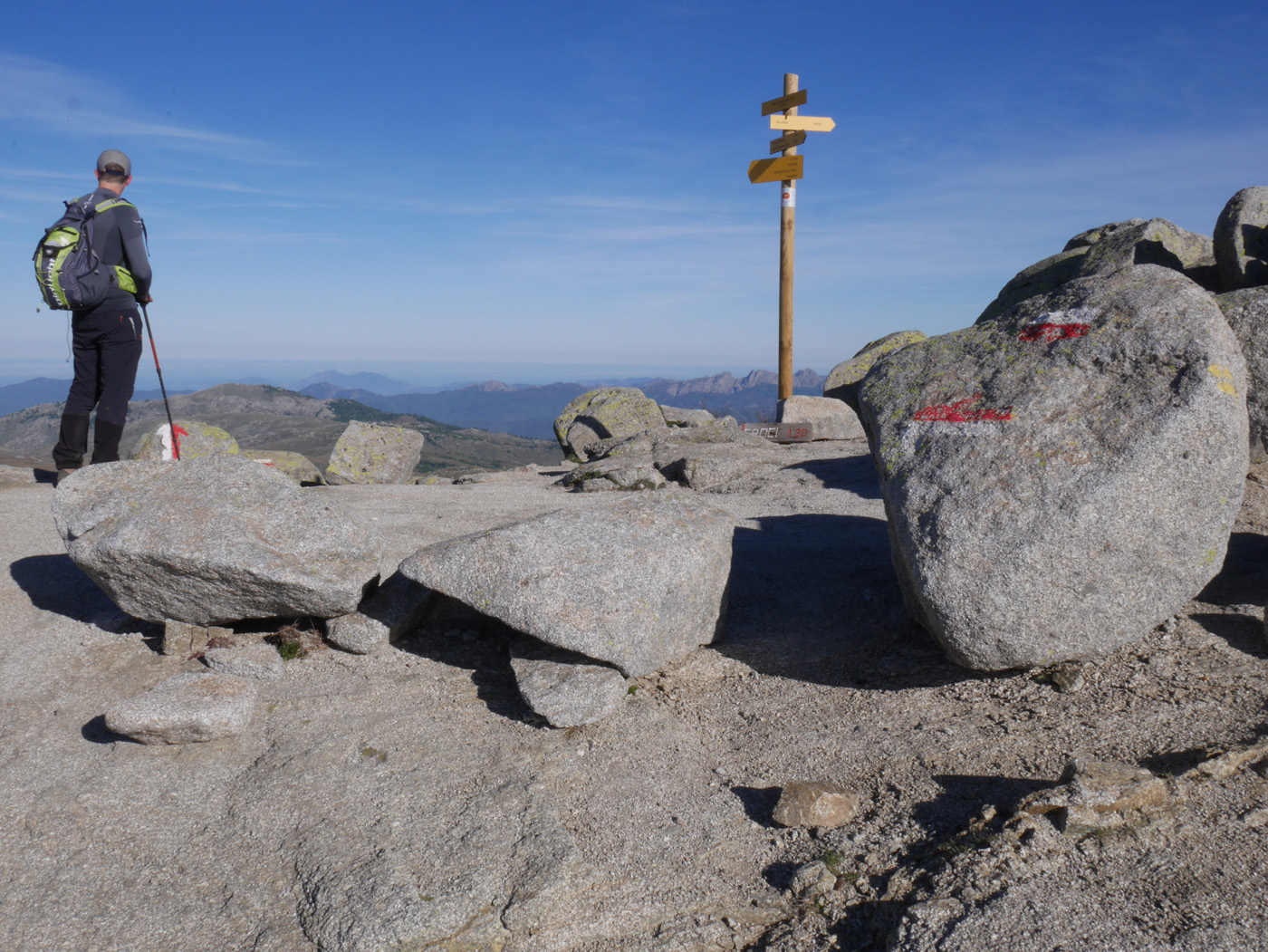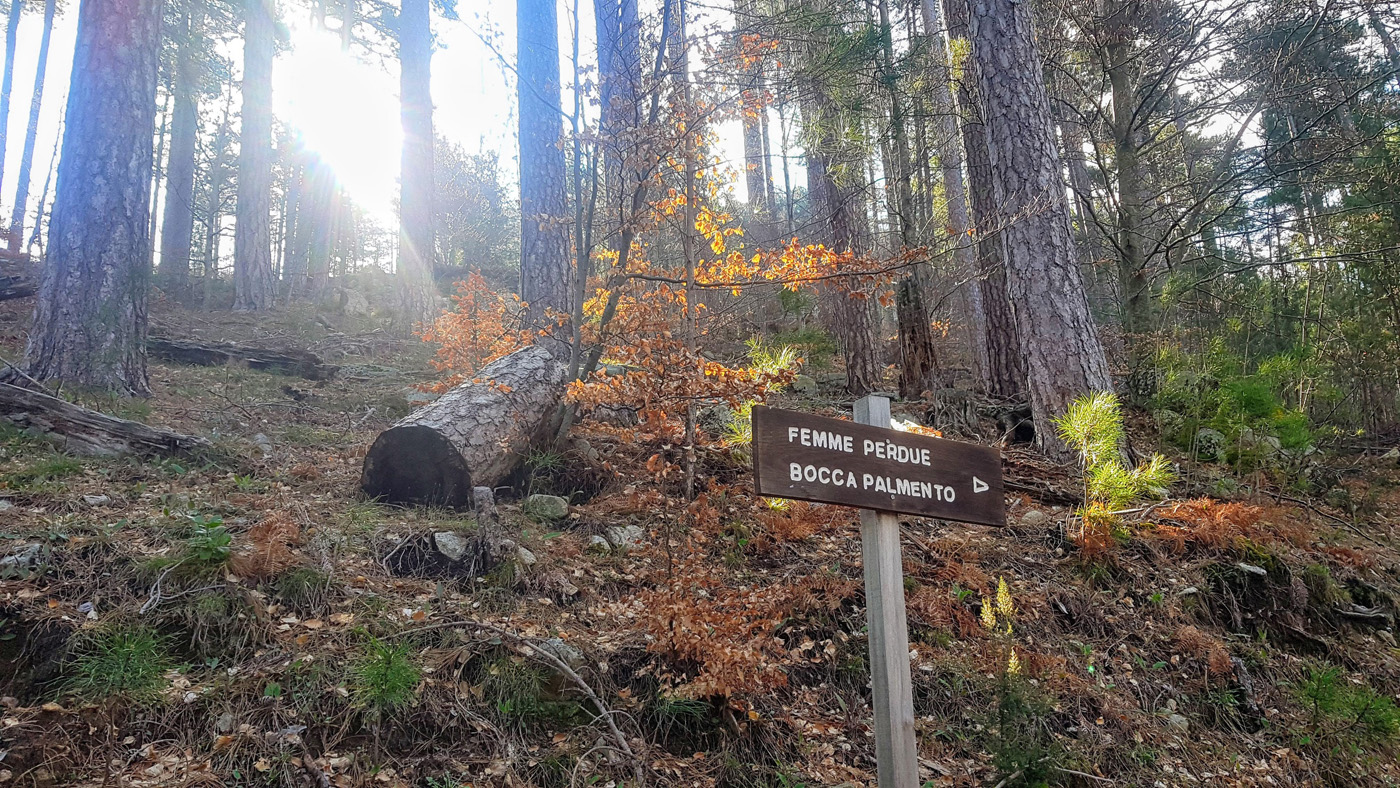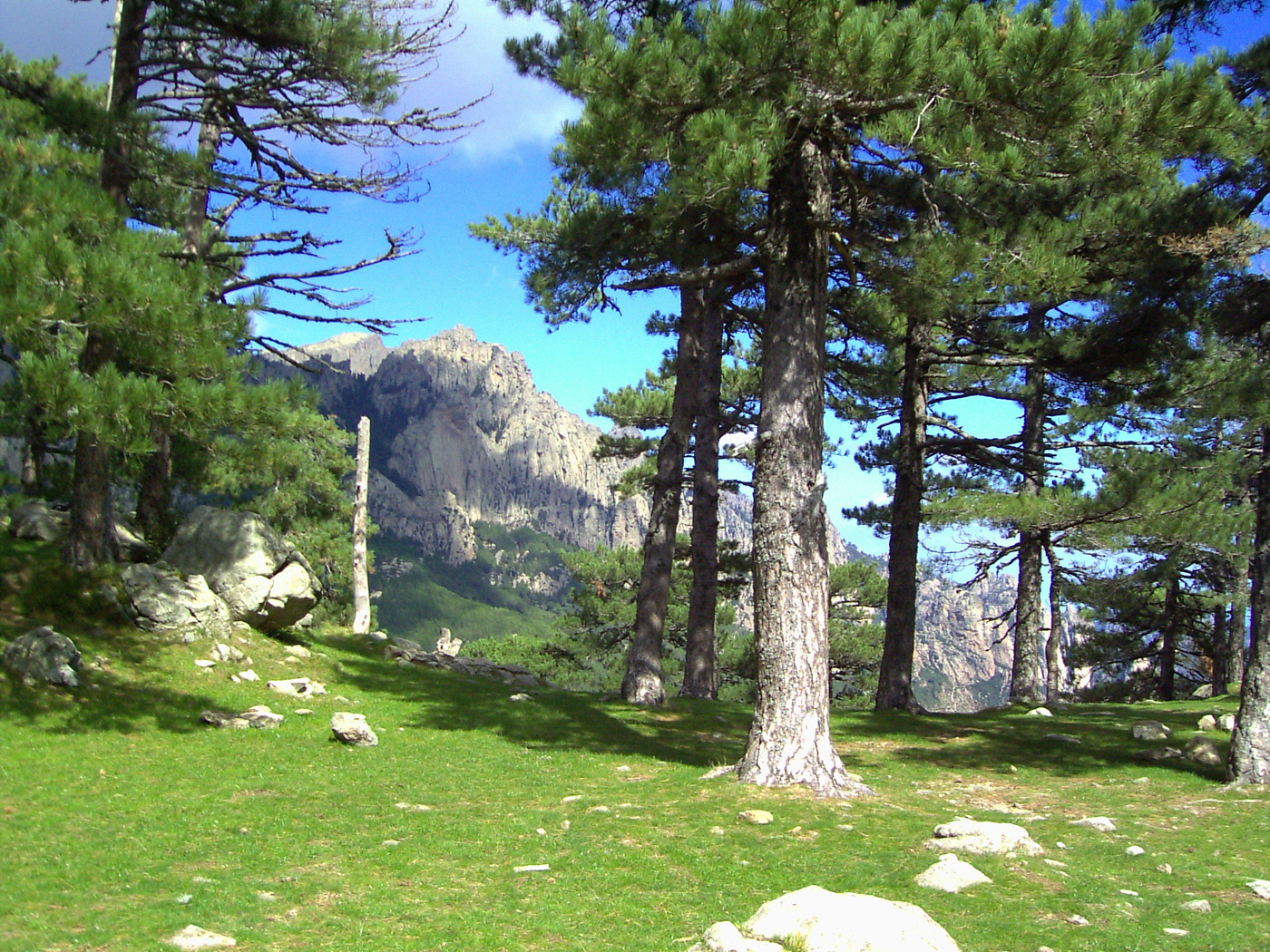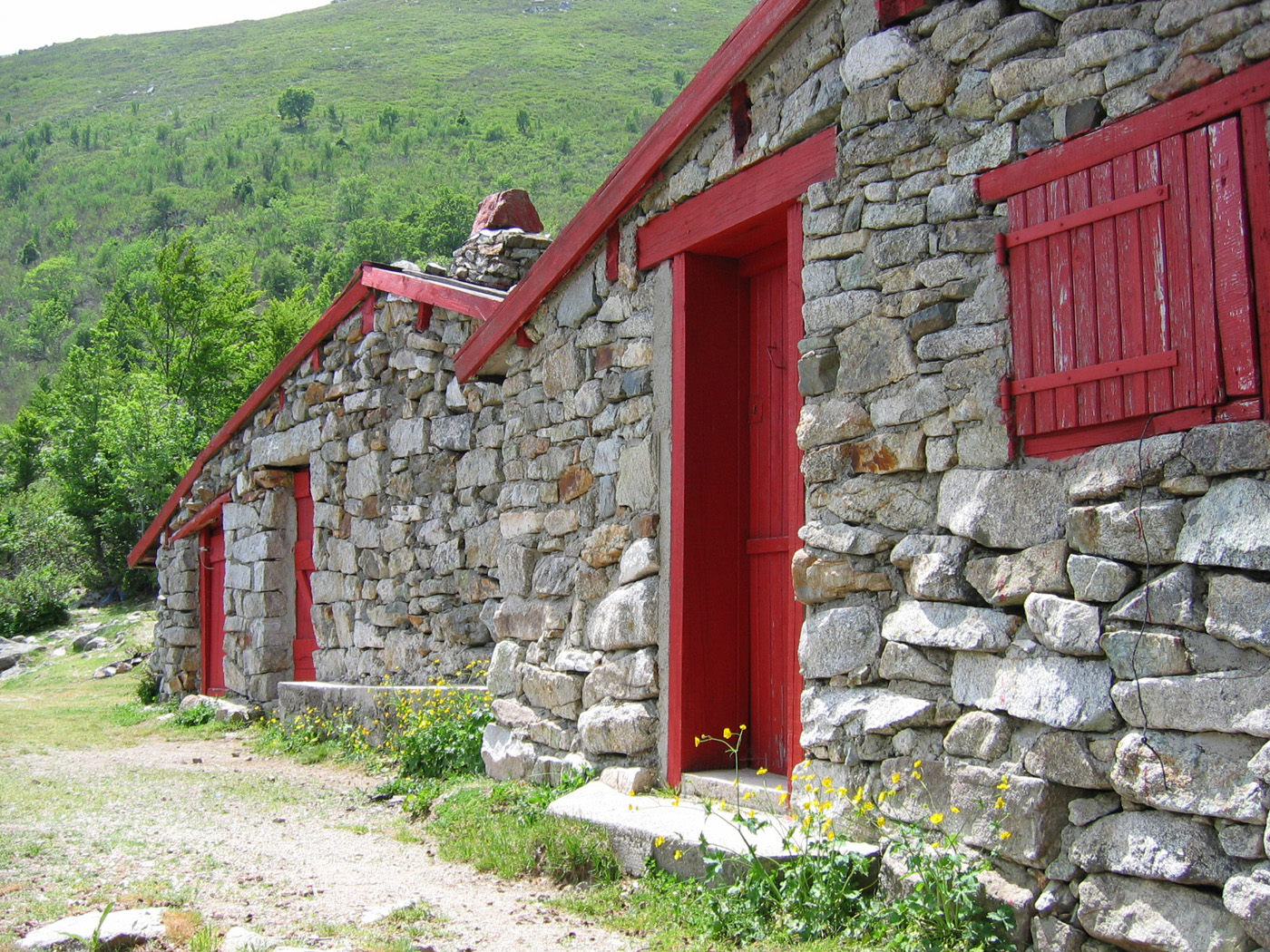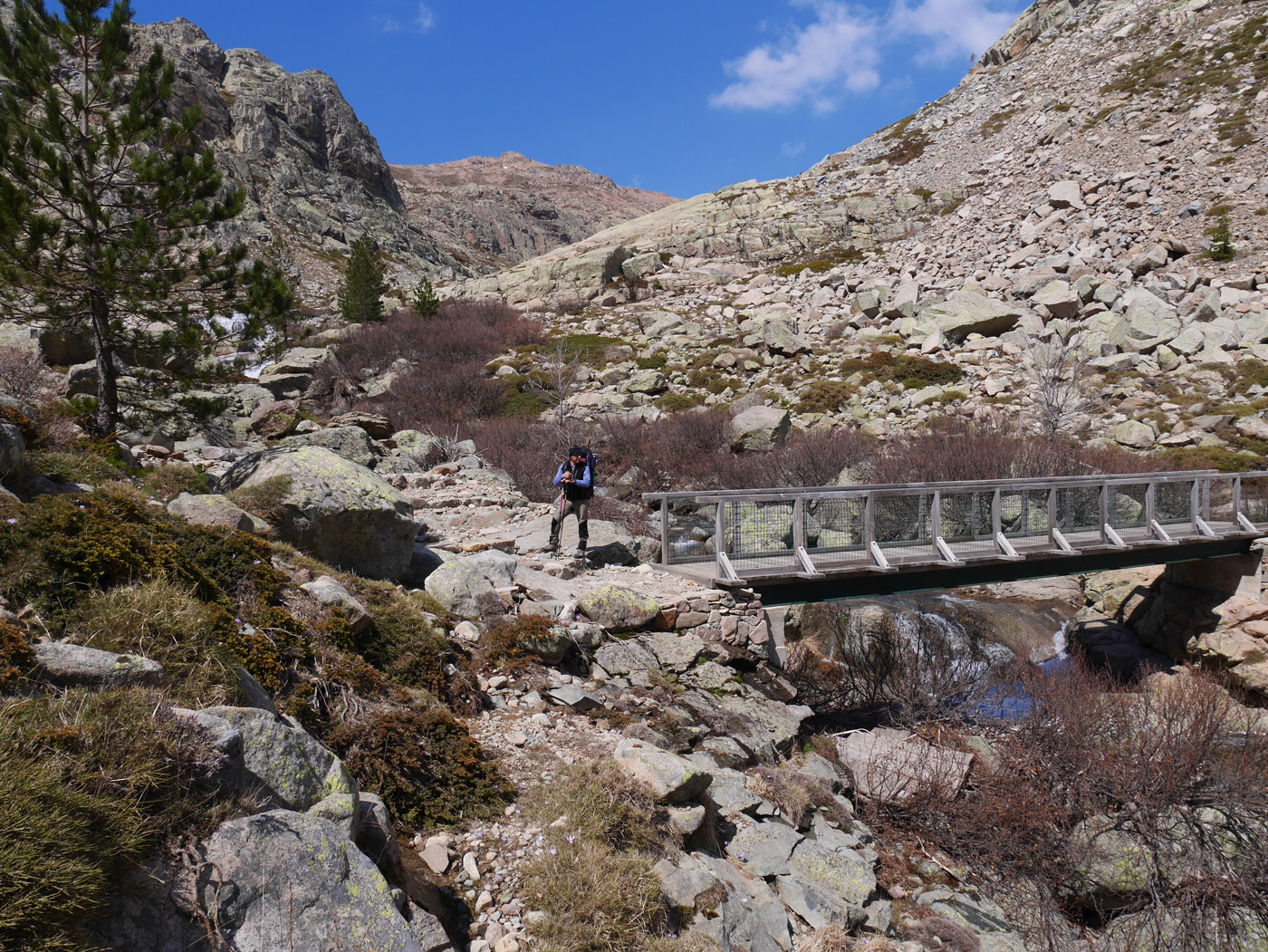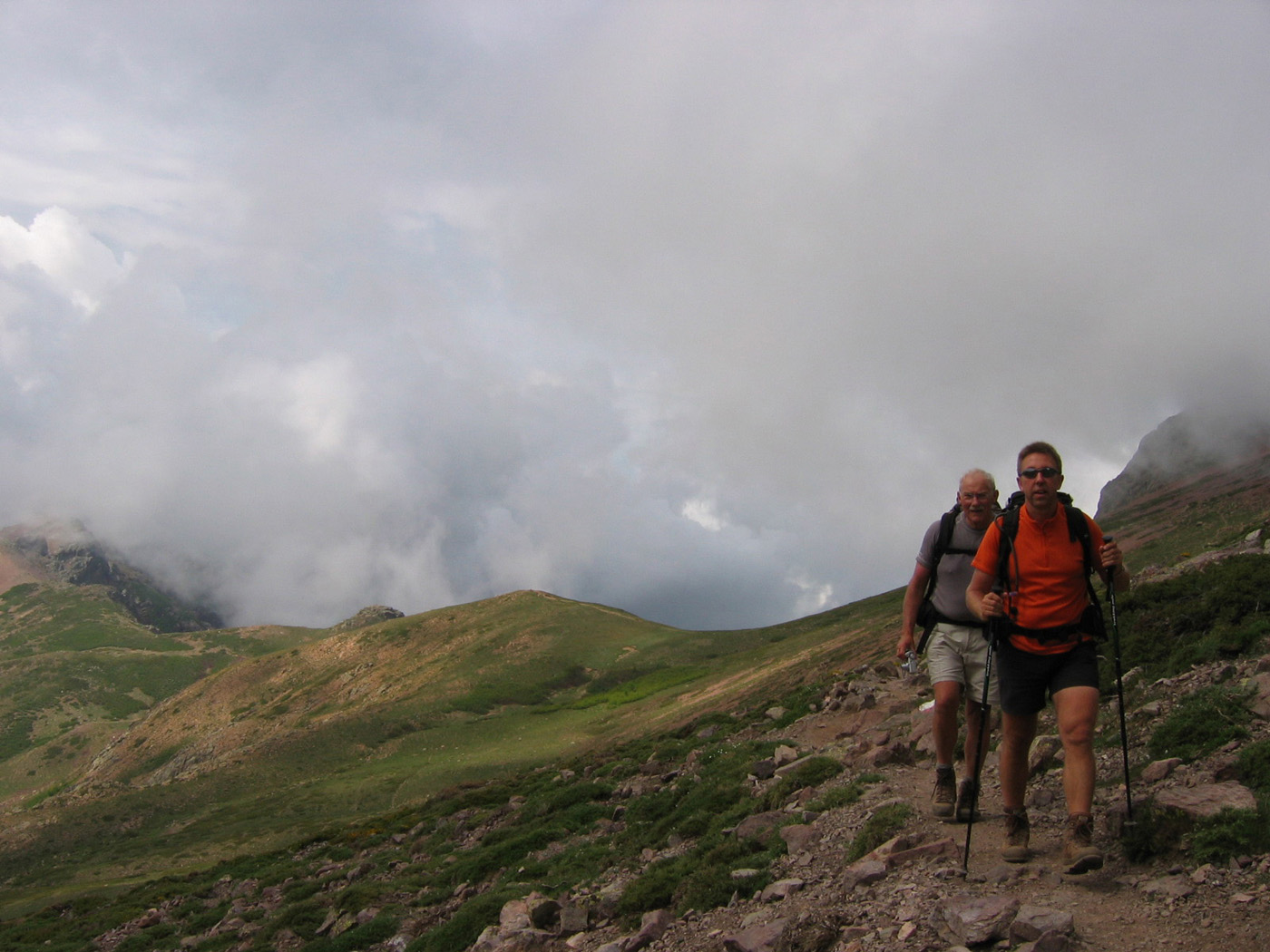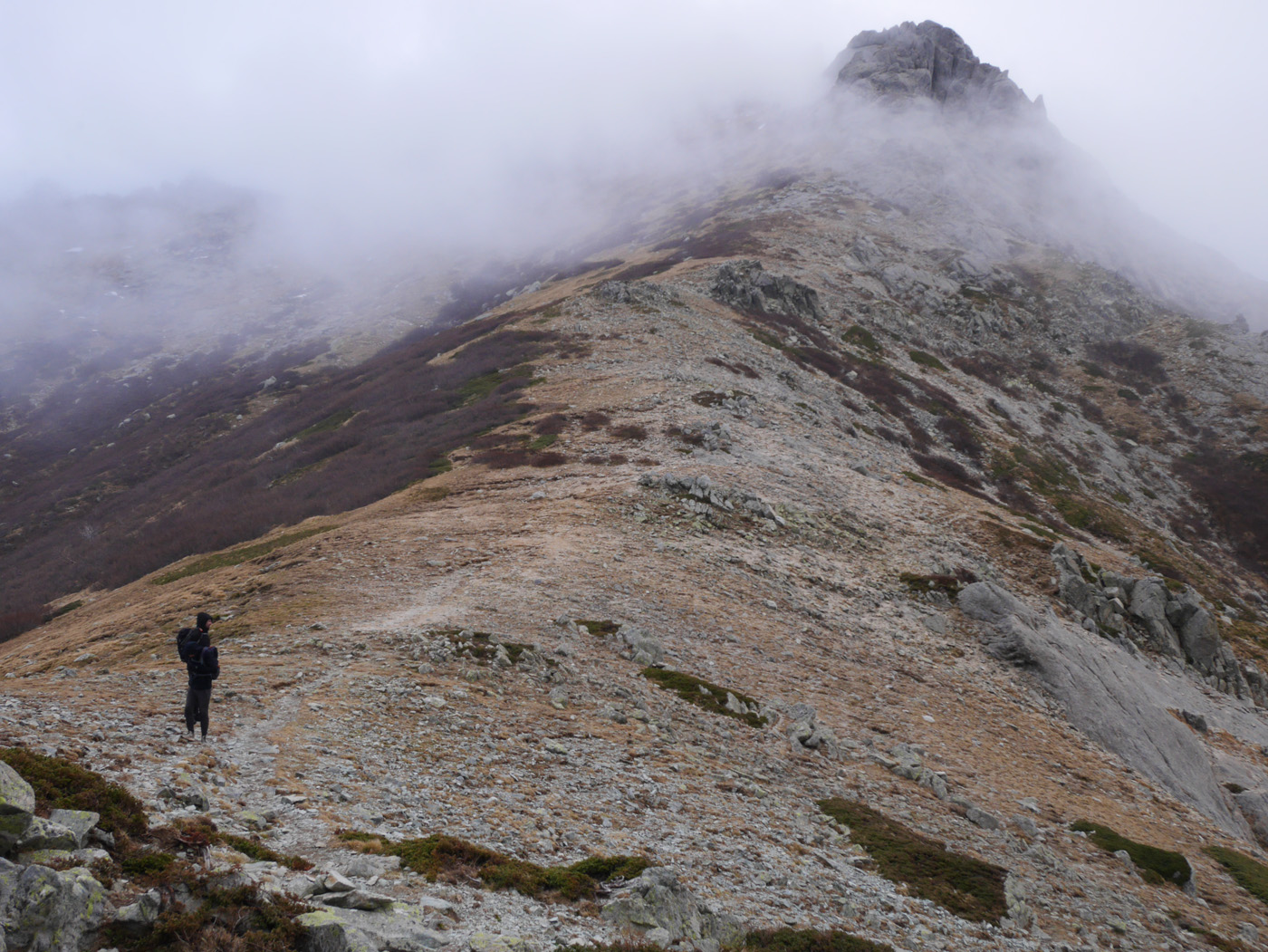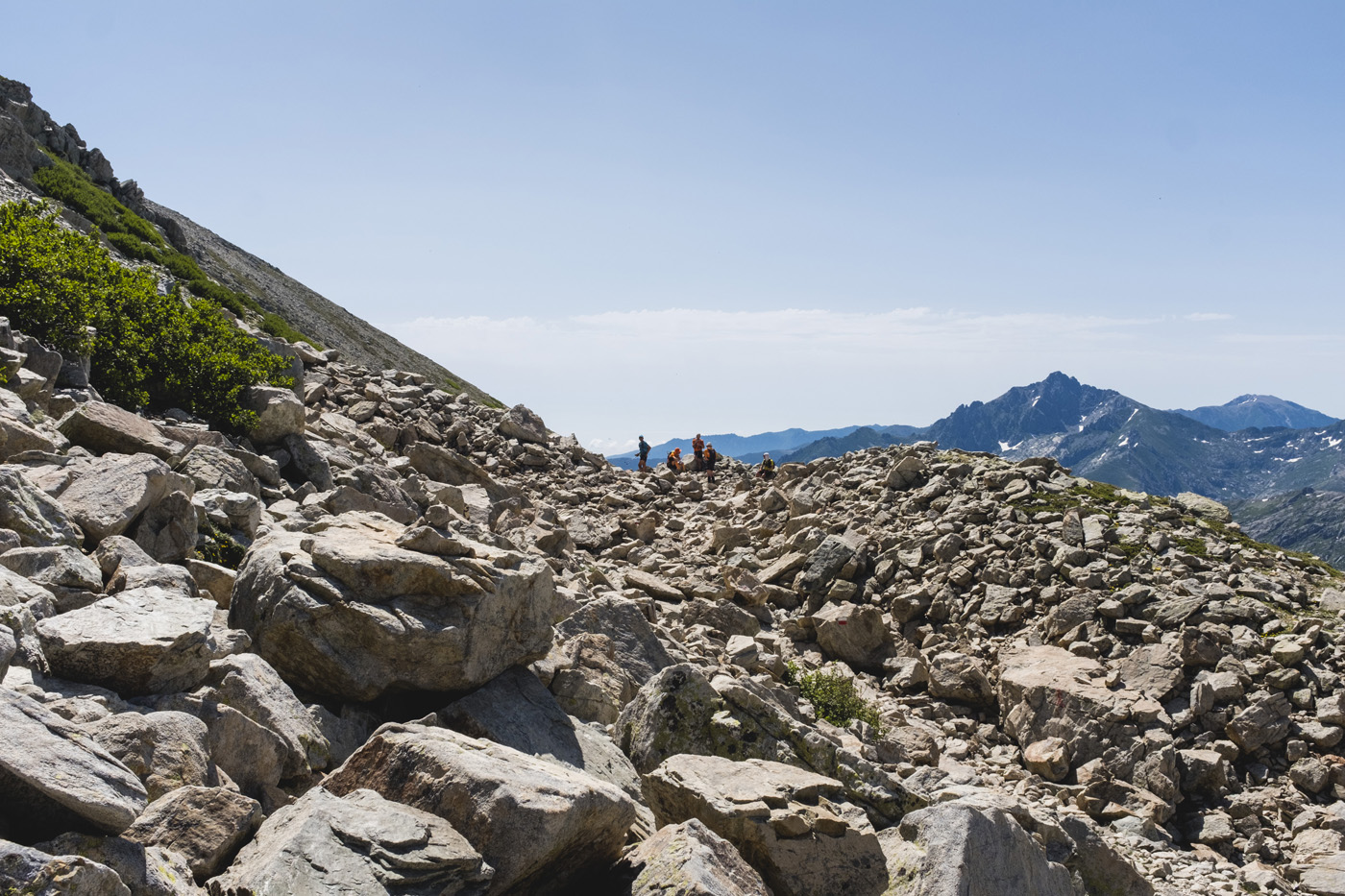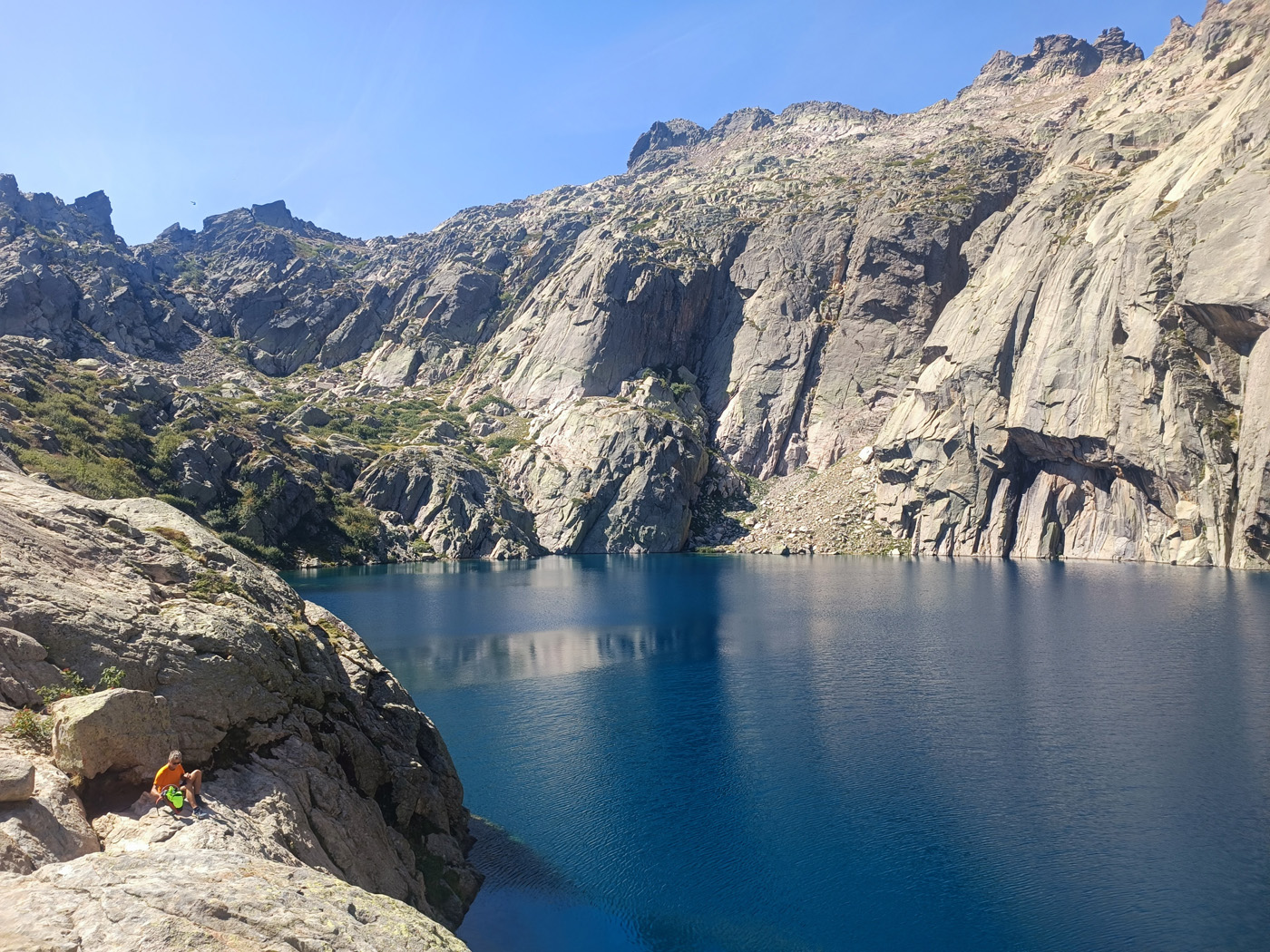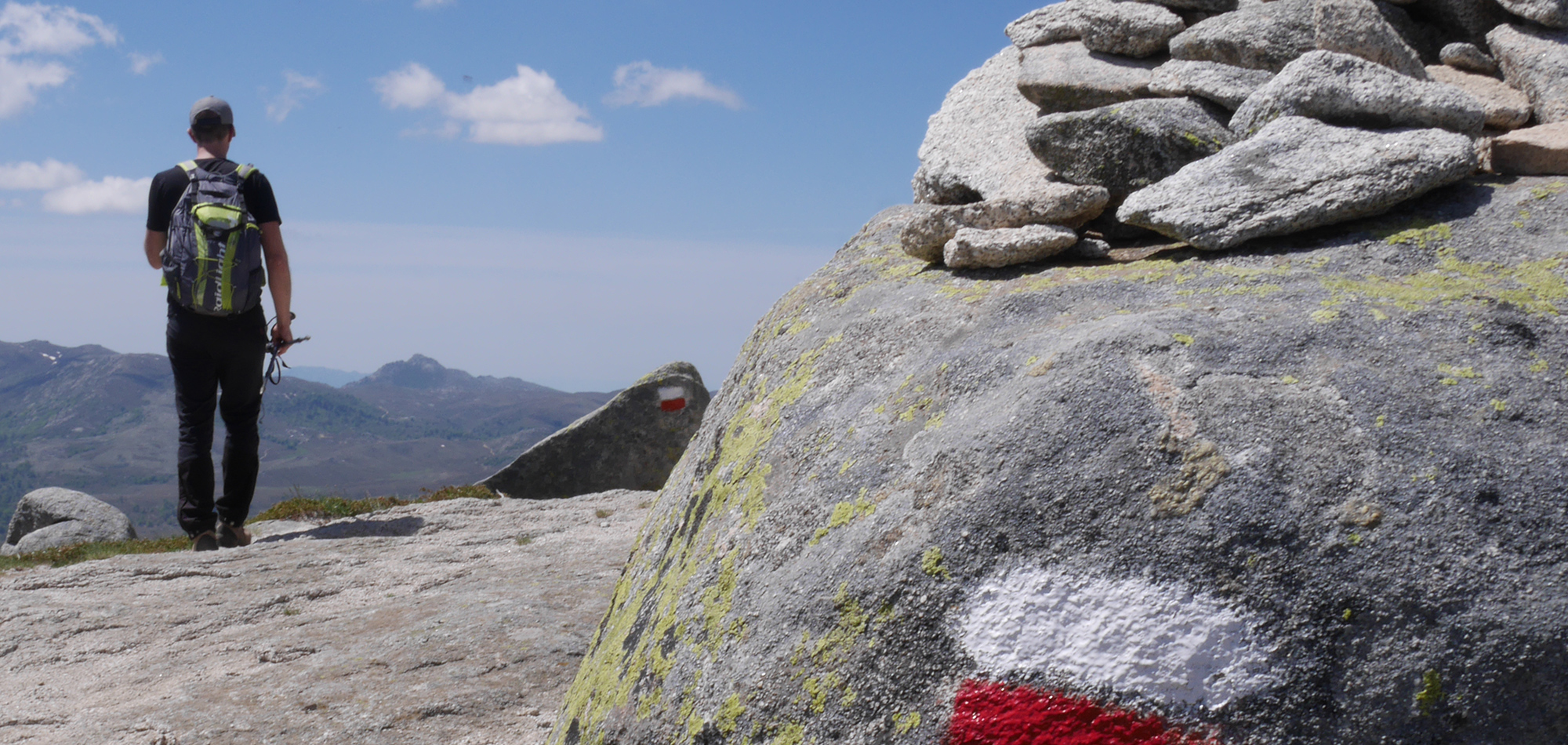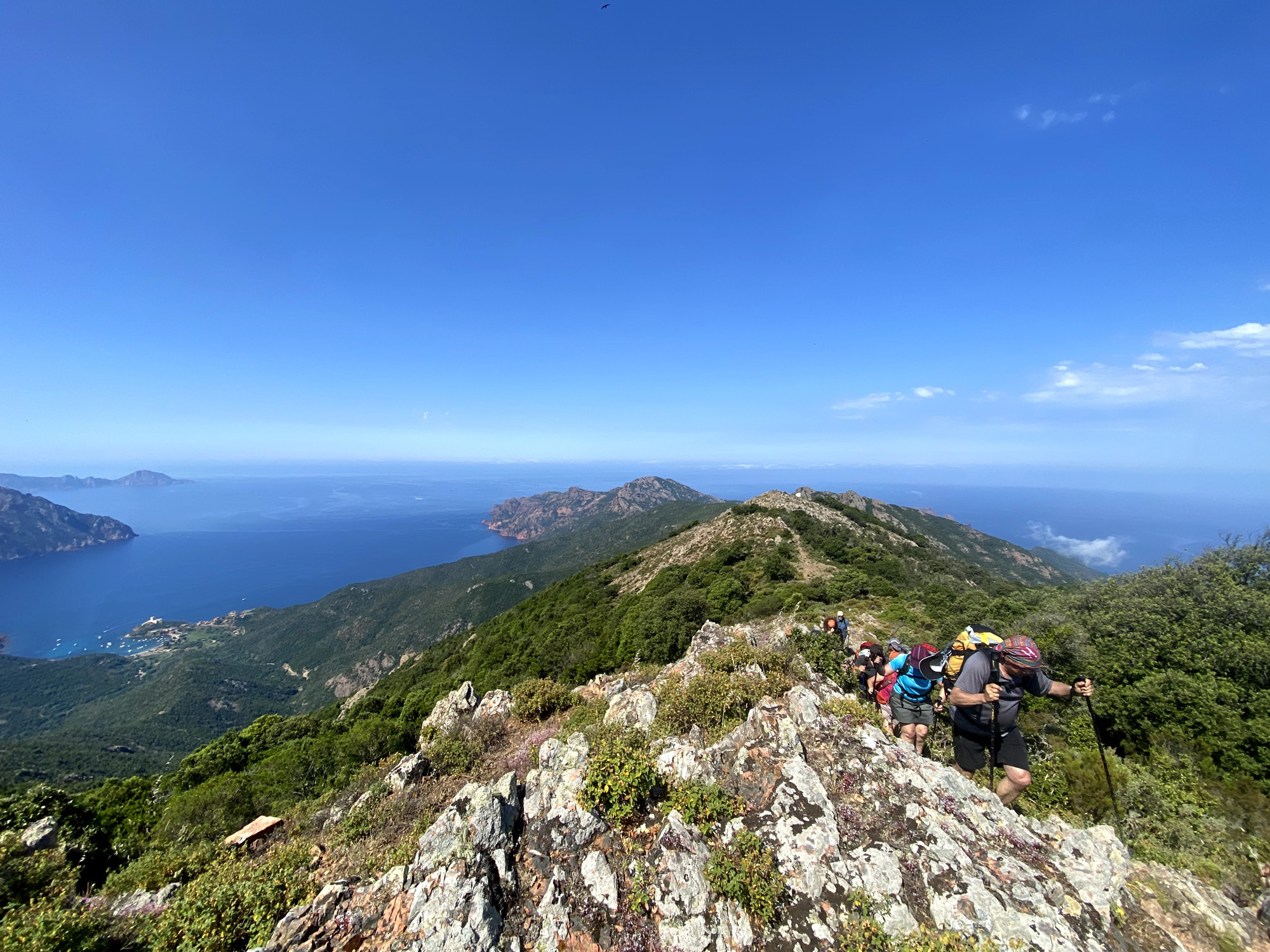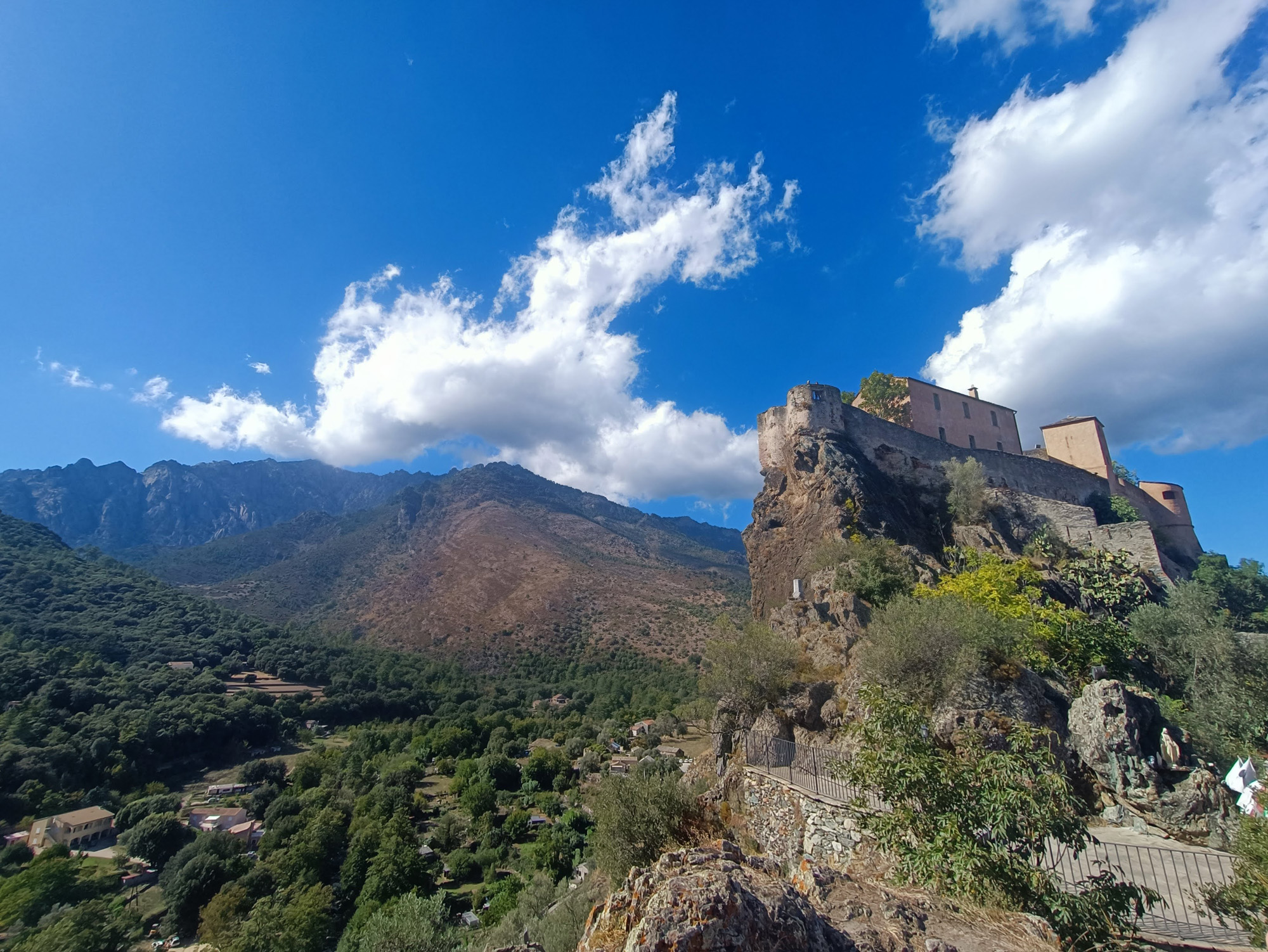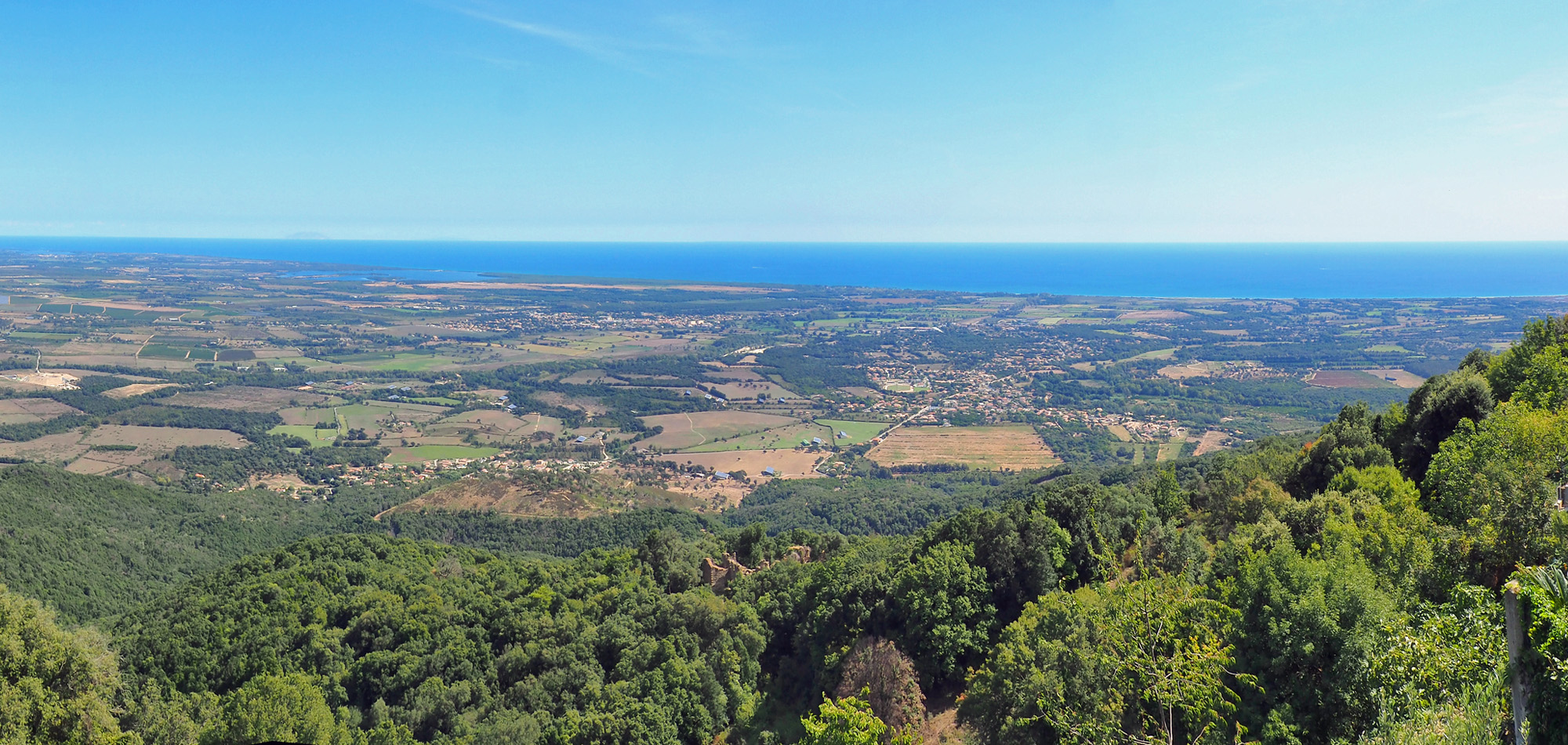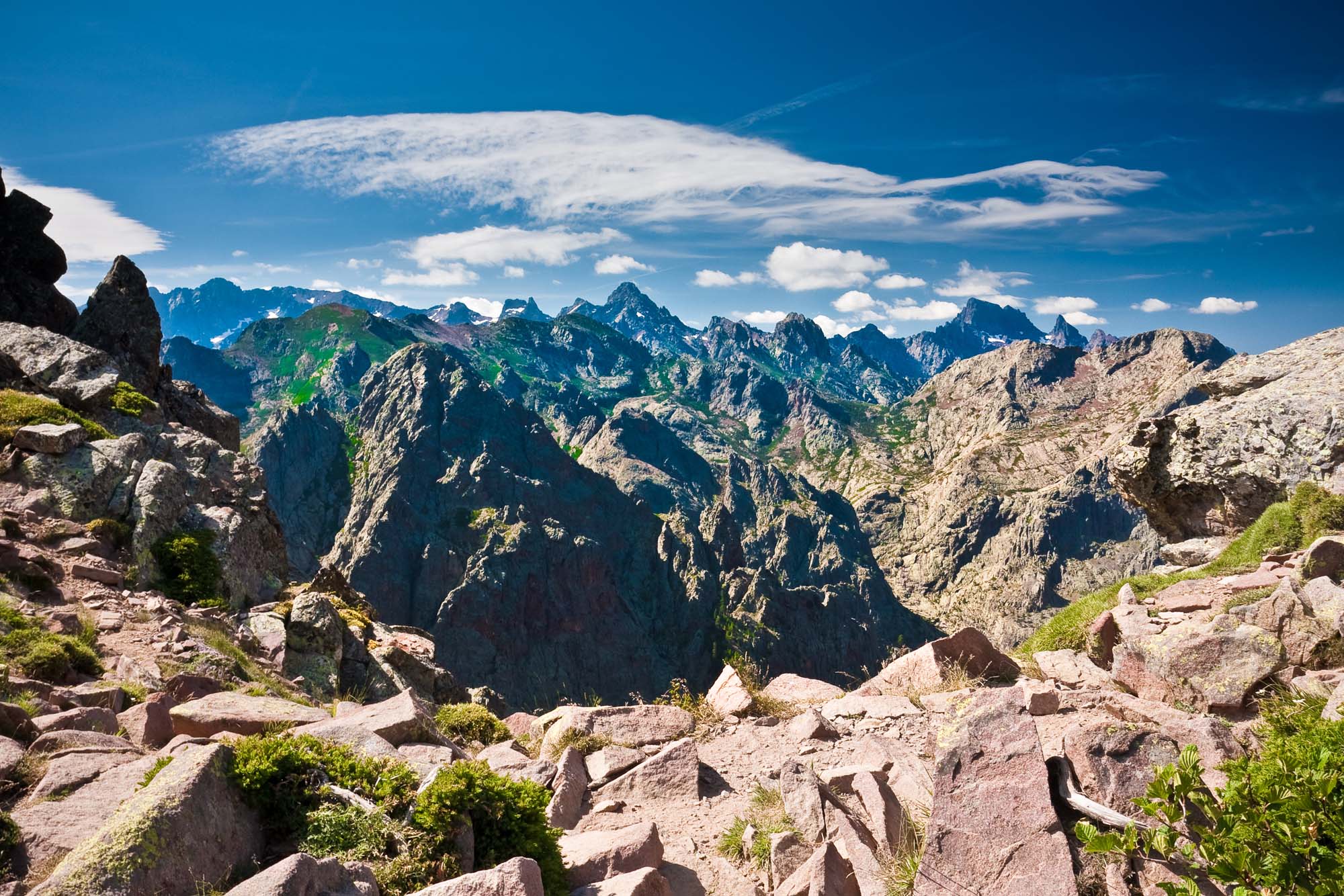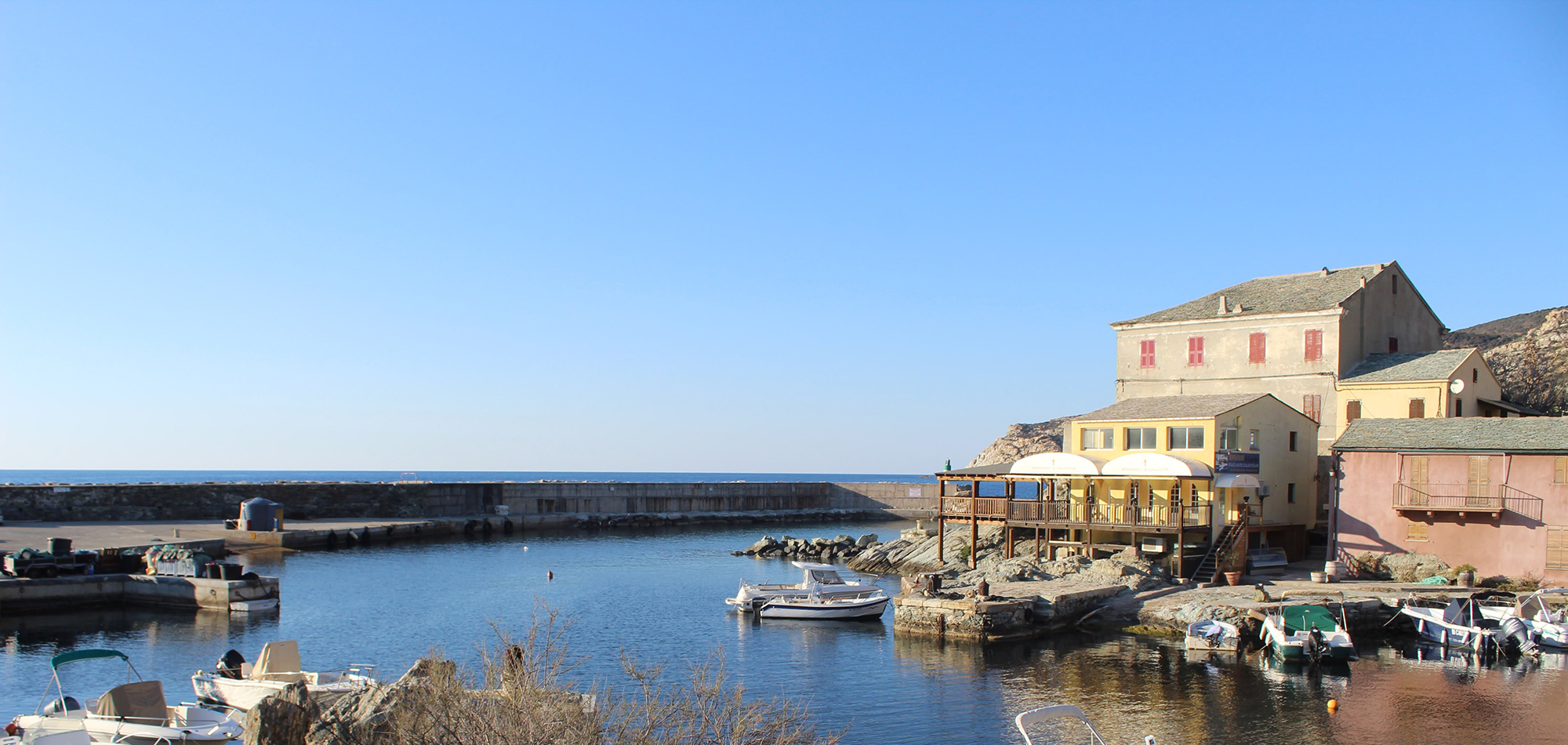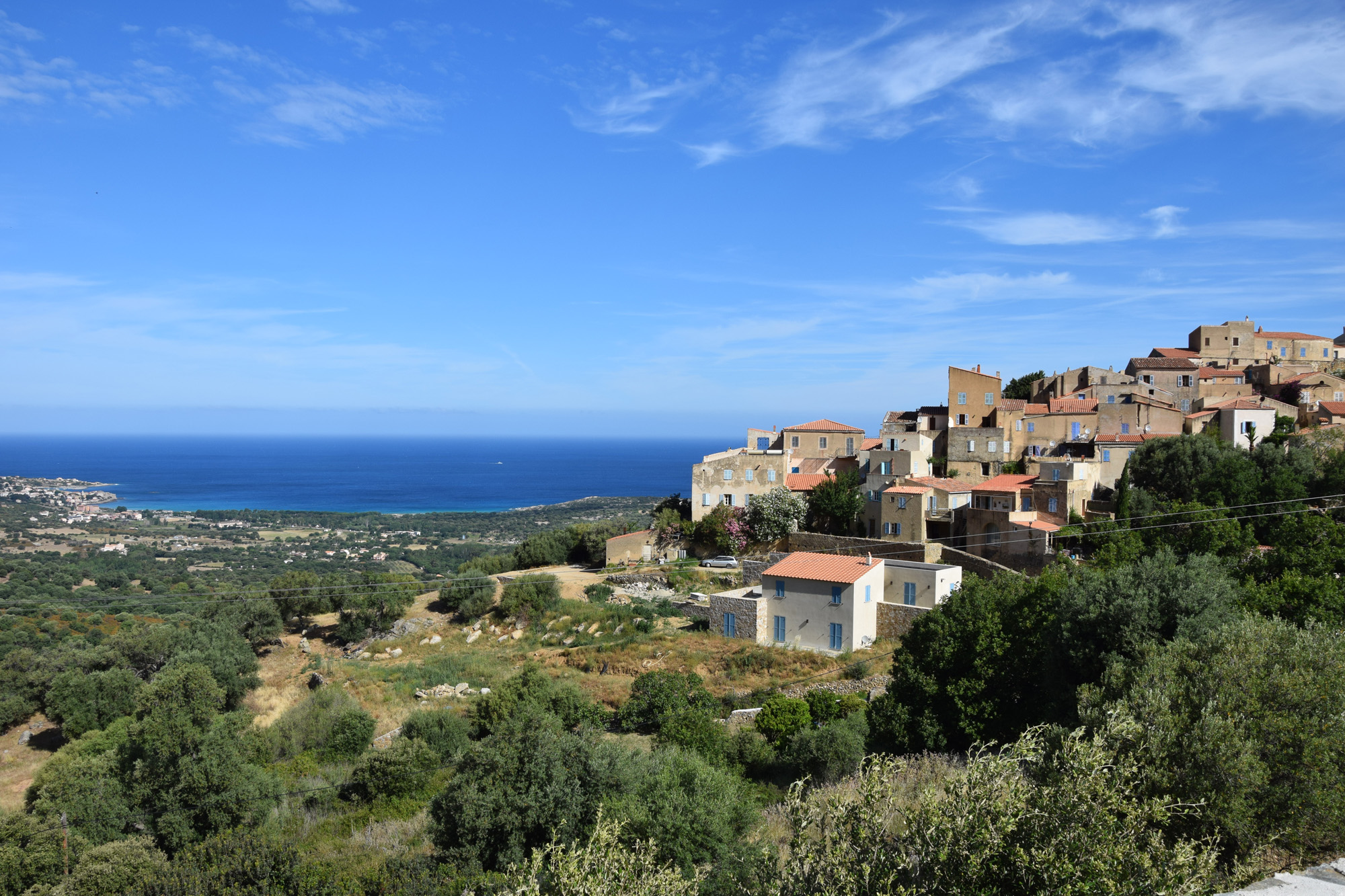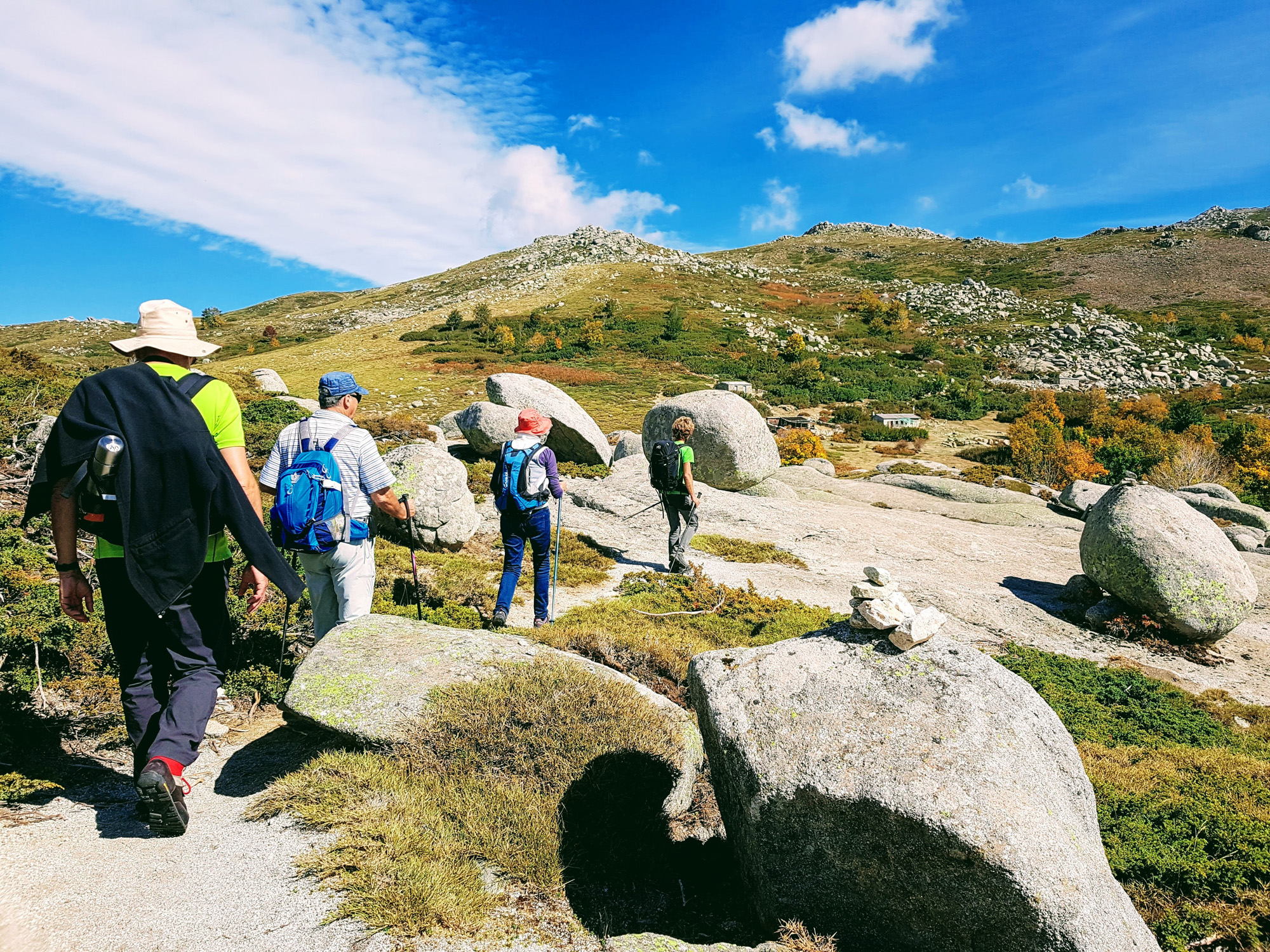
Ajaccio to Bavella
Welcome in Ajaccio. Meeting with a member of our team for a presentation of the tour. Grouped transfer to Bavella ( the journey takes approximately 2h30 ) and settle into the gite before the evening meal.
Bavella to Asinau
Departing from the Col de Bavella, this beautiful stage marks the start of your trek on the GR20. Following the red and white marks, you'll head into the heart of the Aiguilles before taking the alpine route to the Col de Pargulu. You'll pass the foot of the most imposing towers of Bavella. Heading north, the GR20 will take you down into the Asinao valley and its sheepfolds, where you will spend the night.
Asinau to Coscione plateau
The GR20 quickly reaches the Asinao refuge and then climbs a rocky path to the summit of Alcudina. The summit, over 2000 metres high, offers a striking contrast between the rugged terrain of the Aiguilles Bavella and the green landscapes of the Cuscione. The route then descends the hillside, winding its way between the rocks to the Col de Chiralba. From here, you'll head out onto the green grasslands of the Cuscionu plateau. This magnificent journey through the gentle topography of this plateau will take you to Croci.
Coscione plateau to Usciolu
This stage offers a wide variety of breathtaking panoramas. After crossing the Cuscionu plateau and following the right bank of the Padulelli stream, you will reach the Bocca di l'Agnone. From here, the GR20 mainly follows the ridge, offering views of the upper Taravo to the west and the Tyrrhenian Sea to the east. At an altitude of 1,800 metres, you'll reach the Arête des Statues with its strikingly beautiful granite formations. After a few slightly technical sections between the rocks, you'll reach the Usciolu refuge.
PS: At the start of the season, if there's a lot of snow, this stopover could be scheduled in the village of Cozzano.
Usciolu to Col de Verde
The stage reveals breathtaking panoramas of the Tyrrhenian Sea as your backdrop. The day begins with a steep, winding ridge climb to Punta Bianca (1954m). As you approach Monte Formicule, scree appears, alternating with steep sections. From the Bocca di Punta Mozza, the GR20 enters the forest and descends towards the Bocca di Laparo. In the second half of the stage, the route becomes gentler. However, you will have to climb up to the Bocca de Rapari, the Punta di Campitellu and the Punta della Cappella (2041m) before reaching the green meadows of the refuge di u Prati. A gentle climb then takes you to the Bocca d'Oru (1845m) before beginning the final descent to the Col de Verde.
Col de Verde to Capanelle
This moderate level stage, mostly shaded, takes you to the foothills of the Renoso massif. The well-marked path initially winds through the pines and beech trees of the Flasca forest. After crossing the footbridge over the Marmano stream, the path gradually rises to reveal the alpine meadows of Ghjalgone. These more open spaces offer breathtaking views of the heart of the island. Finally, a climb to the Traghjette sheepfolds will precede your arrival at the Capanelle gîte, located at the Ghisoni ski resort.
Capanelle to Vizzavona
Most of the route is under forest cover. Following a path used by shepherds, you'll come across the Alzeta and Scarpaceghje sheepfolds, which are still occupied in summer. The GR20 then climbs to the Col de Palmente at 1640m. The splendid views of the mountains, with Monte d'Oru in front of you and the plain stretching eastwards, will be one of the highlights of the day.
Vizzavona to L'Onda
The GR20 climbs through a dense beech forest towards Pointe Muratello. At the start of the stage, you will follow the course of the Agnone stream as far as the Bergeries de Torteto and its footbridge a little further on. This valley is also home to the famous Cascade des Anglais waterfall, which you'll discover shortly after setting off. Once you've reached the ridge, you'll pass close to the imposing Monte d'Oro. A descent offering breathtaking views of the northern peaks of the island takes you to the Onda refuge.
L'Onda to Petra Piana
The GR20 descends through the Vivario communal forest to reach the Manganello valley. Following the river and its many pools, the path crosses the Bergeries de Tolla and then the Bergeries de Gialgo before reaching the refuge. If the weather is fine, you can opt for an alpine option, via the Serra di Tenda ridge and the Punta di Pinzi di Corbini. This fairly aerial option offers vast panoramic views of the west coast and the imposing massifs of northern Corsica.
Petra Piana to Camputile plateau
The GR20 winds through alders on the southern flank of the A Maniccia summit. After a sustained climb, you'll reach the Bocca Muzzella pass, perched at an altitude of 2,206 metres. From here, the high mountain route to Bocca Alle Porte is a perfect example of what the GR20 is famous for. In the heart of the Rotondo massif and the highest peaks in central Corsica, you'll have breathtaking views of the Melo and Capitello lakes. Following a long ridge line, oscillating between the western and eastern slopes, a descent through vast scree and technical sections will take you to Bocca Soglia. As you approach the Brèche de Capitellu, you'll find some more technical sections, some of which are equipped with chains. The end of the stage will be more serene, with a descent along the stream feeding the Zoicu, leading to the footbridge at the Manganu refuge.
PS: At the start of the season, if there is persistent snow, the stage may be modified for safety reasons.
Camputile plateau to Col de Vergio
This stage offers hikers a break from the technical challenges of the previous days. The first part of the route takes you over the soft pozzines of the Camputile. These natural peat bogs attract herds of horses and cows as you cross the plateau. It's in this bucolic atmosphere, in the heart of the mountain scenery, that you'll reach Lake Nino. From the Bocca A Reta, the GR20 follows the ridges of San Tomghiu down to the Col San Pretu. At the end of the route, you'll arrive at your gîte nestling in the forest below the Col de Vergio.
Col de Vergio to Melarie Valley
The first part of the stage takes you to the Ciuttulu di Mori refuge, nestling at the foot of Paglia Orba with its imposing rhyolite rock formations. First, the GR20 crosses the Valdu Niellu biological reserve and passes the Radule sheepfolds, famous for their waterfalls. After crossing a footbridge to change banks, the path climbs gradually, following the Golo river to the refuge. In the second half of the day, the route first climbs the ridge to the Bocca di Foggiale. To reach the Vallone sheepfolds, you'll have to descend into the Melarie valley, first through crumbly rocky passages, then along a gentler path beneath the Lariccio pines.
Melarie Valley to Haut Asco
Heading north, you'll reach the Tighjettu refuge in 30 minutes, before beginning a 3-hour climb with over 1,000 metres of ascent to Bocca Crucetta (2,456m). From the pass, you can admire the majestic Lac du Cinto and its firn, which remains covered in snow for much of the summer. The GR20 then continues towards the scree slope and Lac d'Argentu. There are several tricky sections equipped with chains, handrails and ladders. You arrive in Asco on a wooded path that winds under the Laricio pines, which are particularly dense in this region.
PS: If the snow persists early in the season, this stage may quickly become impassable. A transfer will be organised to avoid the dangers.
Haut Asco to Calvi
The route zigzags between huge rock formations, climbing past Laricio pines to reach the Bocca Stagnu pass. From here, you can enjoy breathtaking views of the island's mountainous terrain, before reaching the Col de la Muvrella and its intimate lake. Then, you'll begin a grandiose descent towards the Bonifatu cirque, an unspoilt natural setting. This section will mark the end of your adventure on the GR20. At the end of this stage, a bus will be ready to take you to Calvi and its emblematic citadel.
Programs have been drawn up according to the latest information available at the time of writing: imponderables are always possible and situations beyond our control may alter the course of the program.
